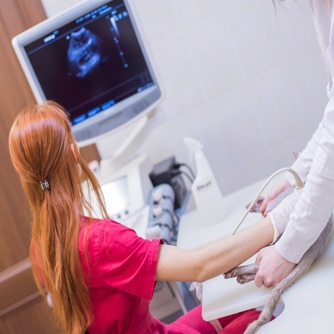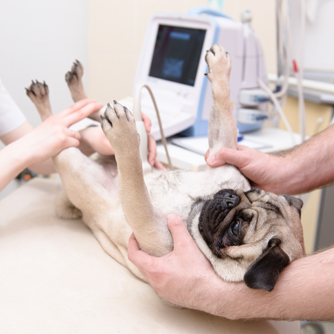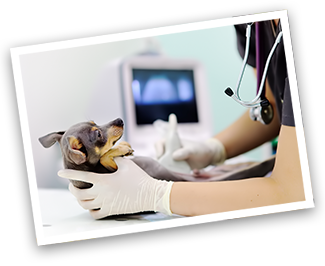Pet Ultrasounds in Punta Gorda, FL

Beginning in the early 1980's, ultrasound has been used to diagnose many disease processes in small animals. It is now considered to be an essential service in all veterinary teaching hospitals and large referral centers and many general small animal practices. The reason for this is simple, ultrasound offers a non-invasive, non-painful method for the diagnosis and staging of many diseases. Ultrasound is the best modality to evaluate fluid filled and soft tissue organs. Because ultrasound will not penetrate through air, ultrasound cannot be used to evaluate abnormalities if they are surrounded by gas.
Why Ultrasound?
Put simply, ultrasound allows us to visualize the internal architecture of many organs. Radiographically inapparent internal abnormalities such as nodules, masses, cysts and abscesses cannot only be seen, but can also be counted and measured. Although the ultrasound examination alone is in many cases non-specific for a particular disease, in conjunction with the animal's age, sex, breed, history, physical exam, radiographic findings and lab work, as well as ultrasound guided fine needle aspirates or true-cut biopsies, the specificity for disease can be high.
Many organs that are difficult to see on plain film radiographs and can be easily seen with ultrasound. Real-time echocardiography (ultrasound examination of the heart) also allows us to see the heart in motion. From these images, measurements of cardiac contractility, areas of abnormal wall motion, chamber dilatation and wall thickening are made and compared to normal values. The typical ultrasound examination requires no tranquilization or anesthesia and is easily performed on awake animals. Prior fasting or water withholding is NOT required. The only patient preparation necessary is clipping of the hair overlying the area to be scanned (the ultrasound will not penetrate through hair) and placing coupling gel on the skin surface just prior to the exam process. The entire scanning process takes 30-40 minutes. Images are acquired on the monitor of the ultrasound machine as well as stored on the hard drive for later viewing.

What Can I See With an Ultrasound?
Ultrasound is best at diagnosing abnormalities that are discrete. An example of this type of lesion would include a mass (tumor) in the liver. Once found, the mass can be accurately measured for later comparison. If the mass is found in an organ that is not required (i.e. the spleen), careful examination of the other organs (such as the liver) for the presence of metastatic disease is needed prior to surgical removal of the "expendable" organ. Ultrasound is used to diagnose a variety of both benign and malignant diseases such as the presence of stones within the urinary bladder, kidneys or gallbladder, infection of the gallbladder, urinary bladder, prostate or kidneys, the presence of enlarged lymph nodes, abnormal blood vessels, or free fluid within the abdomen. It is especially good in diagnosing disease of the pancreas (pancreatitis), adrenal abnormalities, urinary bladder wall tumors, uterine infections (pyometra) and masses that are located behind the eyeball (retrobulbar masses). Ultrasound can often differentiate benign prostatic enlargement from prostatic cancer. In animals with a history of vomiting, ultrasound can be used to evaluate if the problem is within the liver, gallbladder or pancreas.
The diagnosis of pregnancy and heartbeats are commonly seen by 21 days post-conception with ultrasound, which is much earlier than can be done with x-rays. Abnormalities in the heart can be seen this way as well, such as a diseased heart muscle (hypertrophic and dilated cardiomyopathy), fluid around the heart (pericardial effusion), and congenital abnormalities can be diagnosed and the severity can be assessed. Heartbase tumors, which are rarely seen on radiographs, are easily visualized with ultrasonography. Ultrasounds often diagnosis problems earlier than would otherwise be possible. This often affords an earlier diagnosis for better chance of successful treatment.

